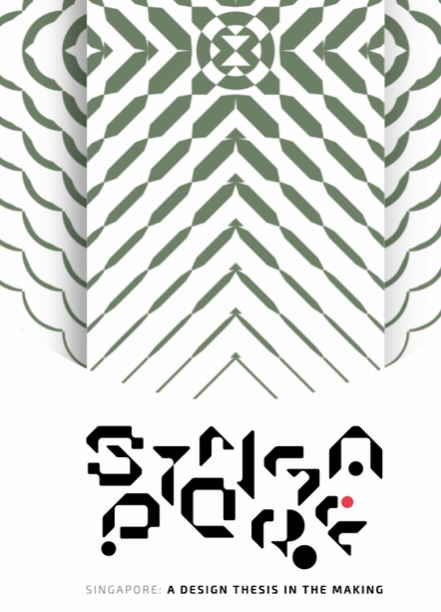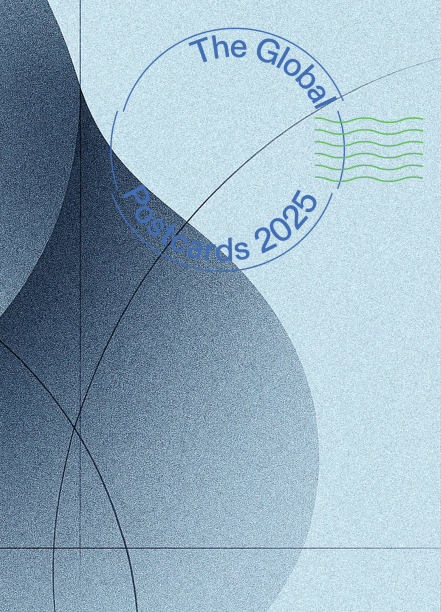It's the video taking the internet by storm! We Are Singapore, the official music video of the National Day Parade (NDP) 2018 saw the involvement of two prominent LASALLE alumni. BA(Hons) Film alumnus Boo Junfeng provided his creative direction and vision, while BA(Hons) Arts Management alumna Sharon Ng co-produced the inspiring video.
With their open and unique designs, our outdoor spaces are ideal for exhibitions, performances and corporate functions.
Want to hire this venue? Fill up the form and send it to us at venue@lasalle.edu.sg
More information:
- Venue hire requests may be submitted 12 months in advance. We will respond as soon as a decision is made and no less than six months prior to event date.
- For major productions involving long running shows (two-week run and above), requests will be considered up to one year in advance.
- Venue hire requests for The Singapore Airlines Theatre, Flexible Performance Space and Creative Cube have to be submitted at least six months in advance.
- All venue hire requests will be reviewed and you will be informed on the status of the request within five working days.
- We will respond as soon as possible. If you are working with a specific deadline, please do let us know.
- For photography and/or videography within the LASALLE campuses, contact venue@lasalle.edu.sg
These private spaces are suitable for dance and performance rehearsals or workshops.
Want to hire this venue? Fill up the form and send it to us at venue@lasalle.edu.sg
More information:
- Venue hire requests may be submitted 12 months in advance. We will respond as soon as a decision is made and no less than six months prior to event date.
- For major productions involving long running shows (two-week run and above), requests will be considered up to one year in advance.
- Venue hire requests for The Singapore Airlines Theatre, Flexible Performance Space and Creative Cube have to be submitted at least six months in advance.
- All venue hire requests will be reviewed and you will be informed on the status of the request within five working days.
- We will respond as soon as possible. If you are working with a specific deadline, please do let us know.
- For photography and/or videography within the LASALLE campuses, contact venue@lasalle.edu.sg
Host screenings, seminars or workshops at any one of our Lecture Theatres.
Want to hire this venue? Fill up the form and send it to us at venue@lasalle.edu.sg
More information:
- Venue hire requests may be submitted 12 months in advance. We will respond as soon as a decision is made and no less than six months prior to event date.
- For major productions involving long running shows (two-week run and above), requests will be considered up to one year in advance.
- Venue hire requests for The Singapore Airlines Theatre, Flexible Performance Space and Creative Cube have to be submitted at least six months in advance.
- All venue hire requests will be reviewed and you will be informed on the status of the request within five working days.
- We will respond as soon as possible. If you are working with a specific deadline, please do let us know.
- For photography and/or videography within the LASALLE campuses, contact venue@lasalle.edu.sg
As the first black box theatre in Singapore with flexible “in-the-round” seating, Creative Cube is the perfect stage for theatre performances and multimedia events.
Want to hire this venue? Fill up the form and send it to us at venue@lasalle.edu.sg
More information:
- Venue hire requests may be submitted 12 months in advance. We will respond as soon as a decision is made and no less than six months prior to event date.
- For major productions involving long running shows (two-week run and above), requests will be considered up to one year in advance.
- Venue hire requests for The Singapore Airlines Theatre, Flexible Performance Space and Creative Cube have to be submitted at least six months in advance.
- All venue hire requests will be reviewed and you will be informed on the status of the request within five working days.
- We will respond as soon as possible. If you are working with a specific deadline, please do let us know.
- For photography and/or videography within the LASALLE campuses, contact venue@lasalle.edu.sg
Catering to the artistic requirements of a production, this flexible space can be easily configured for your needs. The lighting and sound facilities make it suitable for experimental performances and events.
Want to hire this venue? Fill up the form and send it to us at venue@lasalle.edu.sg
More information:
- Venue hire requests may be submitted 12 months in advance. We will respond as soon as a decision is made and no less than six months prior to event date.
- For major productions involving long running shows (two-week run and above), requests will be considered up to one year in advance.
- Venue hire requests for The Singapore Airlines Theatre, Flexible Performance Space and Creative Cube have to be submitted at least six months in advance.
- All venue hire requests will be reviewed and you will be informed on the status of the request within five working days.
- We will respond as soon as possible. If you are working with a specific deadline, please do let us know.
- For photography and/or videography within the LASALLE campuses, contact venue@lasalle.edu.sg
The largest and grandest of our event venues, The Singapore Airlines Theatre is ideal for major public performances of theatre, music and dance. The stage comes with an orchestra pit which accommodates up to 25 musicians, full scenery flying facilities, latest lighting and sound equipment, dressing rooms and fully-equipped workshops for scenery, props and costume construction.
Want to hire this venue? Fill up the form and send it to us at venue@lasalle.edu.sg
More information:
- Venue hire requests may be submitted 12 months in advance. We will respond as soon as a decision is made and no less than six months prior to event date.
- For major productions involving long running shows (two-week run and above), requests will be considered up to one year in advance.
- Venue hire requests for The Singapore Airlines Theatre, Flexible Performance Space and Creative Cube have to be submitted at least six months in advance.
- All venue hire requests will be reviewed and you will be informed on the status of the request within five working days.
- We will respond as soon as possible. If you are working with a specific deadline, please do let us know.
- For photography and/or videography within the LASALLE campuses, contact venue@lasalle.edu.sg
The full-scale house has a long history in theatrical set design, and the addition of video projections and digital effects in recent multimedia theatre has resulted in some extraordinary productions that compress or reconfigure ideas of time, space and place, and interrogate the close interrelationships between the macro and micro, and the real and the unreal.
This article focuses on the encounters and exchanges between French and Chinese artists, art critics and curators from 1985–90 and their impact on the development of two important presentations of the ’85 New Wave movement in France: Magiciens de la Terre (1989) and Chine Demain pour Hier (1990). Drawing on interviews with French and Chinese artists, critics and curators, it argues how the politics of intercultural encounters influenced the curatorial frameworks of both these exhibitions.
In the recent decade, a downward trend of employment has been observed in the animation and VFX industry globally. This trend is observed in Singapore as the domestic industry is integrated through international studios and markets. Tertiary institutions in Singapore, particularly media related courses, turn out a pool of talented graduates every year. Of those, only two tertiary institutions are equipped to cater to students seeking a career in animation and VFX industry in Singapore.



